Geisha, written 芸者 in Japanese, literally means “person of art.” The first kanji, 芸, conveys the meaning of art or performance, while 者 refers to a person, and is often used in combination with other kanji to describe someone’s role or profession. In Kyoto, geisha are called geiko, and those who are still in training are known as maiko.
At their core, geiko are highly skilled entertainers trained in traditional arts such as dance, music, conversation, and hosting. They emerged around the 18th century and have been part of the Japanese culture ever since. Even though their numbers have decreased significantly since their peak before World War II, it’s still possible to meet real geisha and enter their world through a private dinner in a Kyoto ochaya (tea house).
Why Are Geiko Dinners So Difficult to Book?
However, booking such an experience is notoriously difficult. Reservations usually require an introduction, and unless you’re well-connected and fluent in Japanese, it’s nearly impossible to arrange on your own.
Very few companies have the connections to organize this kind of experience—especially one that isn’t designed for tourists but reflects what Japanese local customers would receive. Wabunka is one of those rare companies, specializing in private and authentic cultural experiences.
Thanks to Wabunka, I had the chance to attend one of these dinners. What I thought would be just a high-priced experience turned out to be one of the most memorable evenings I’ve ever had in Japan.
What Happens During a Dinner with Geiko and Maiko?
The evening started outside the ochaya, tucked away in Kyoto’s Gion Higashi district, one of the city’s five geisha districts. In order to ensure stress-free communication with the geiko and maiko attending the dinner, Wabunka arranges a private guide and interpreter for all bookings. My guide for the night, Selina, was already waiting for me when I arrived.
From the outside, the ochaya looked beautiful and inviting, with soft lights and a wooden design that felt both traditional and elegant. It gave off a sense of mystery—the kind of place where you don’t know what happens inside, but you know it must be something special. Tonight, I was finally going to see for myself.
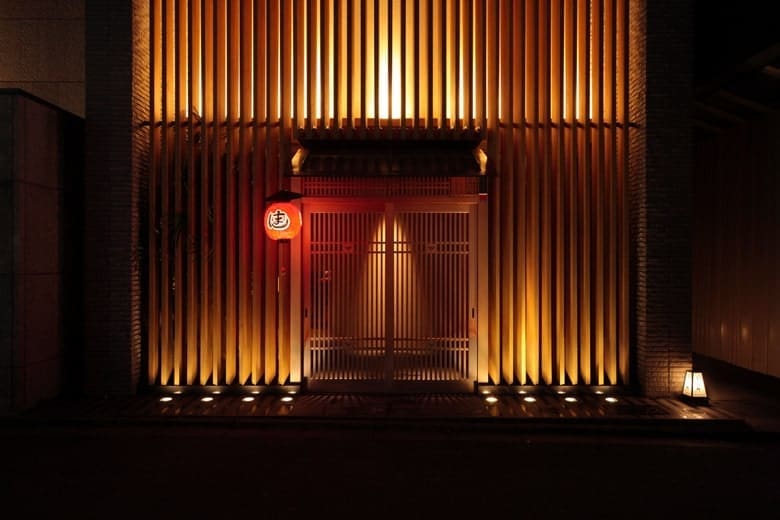
Before heading inside, Selina explained the traditions of ozashiki (banquets) and the culture surrounding geiko and maiko. It is not my first time joining a Wabunka experience (I can’t recommend them enough – they offer the most authentic experiences in Japan), but I’m always impressed by how kind and knowledgeable their guides are.
Once we entered, we were guided upstairs to a private ozashiki room, a beautifully arranged tatami-floored space. I’m always a bit nervous about traditional Japanese rooms because they often have low tables and floor chairs. These chairs have a backrest but no legs, so you’re still sitting directly on the floor. This usually means having to sit cross-legged or in seiza position, which can get uncomfortable quickly, especially for people with non-existent flexibility (like me). But this ozashiki room was surprisingly comfortable. It had a recessed space under the table, so I wouldn’t have to deal with the usual discomfort. My legs sighed with relief.
As we settled in, our guide Selina helped us order our drinks, and soon after, the geiko and maiko entered to greet us. The geiko was Masaki, an experienced artist, elegant and confident. The maiko was Masane, a promising apprentice with youthful grace and charm. Both belong to Ochaya Man, the teahouse where this experience takes place, owned by the fourth-generation proprietress Masami Ueyanagi.
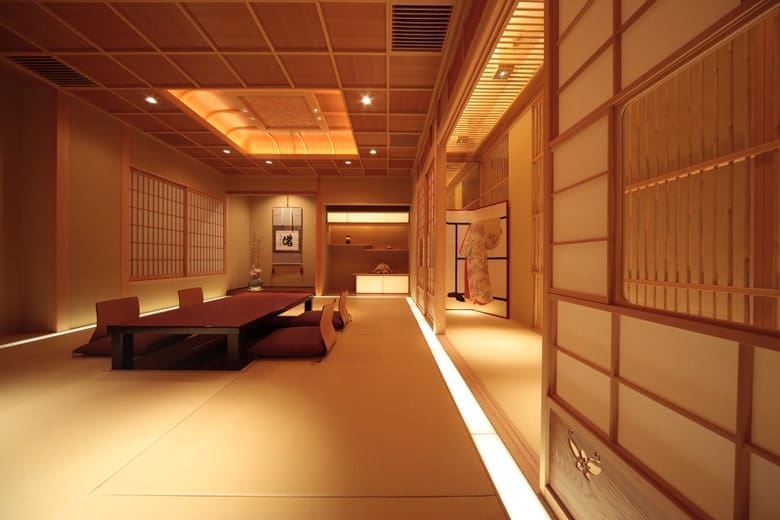
I’m not going to lie. I was quite nervous about meeting a real geiko and maiko, especially in a language I don’t speak fluently. But from the moment they stepped into the room, the atmosphere transformed. Their presence filled the space with warmth and energy.
I had seen geiko and maiko passing by on the streets, but being so close to them, seeing their kimono and make-up up close, being able to hear their voices, felt completely different. As we started chatting I could ask many questions that had been in my mind for a long time.
Why did they decide to pursue this specific profession, how do they see the profession evolving in the coming decades, what do their daily lives look like outside of appointments, and of course what did they think of the current over-tourism trend (Kyoto even started limiting access to specific streets in Gion in April 2024), among other things.
The conversation flowed effortlessly, with my guide translating everything flawlessly.
While we chatted, the meal began. We were served a kaiseki dinner (Japanese style multi-course meal), with each dish beautifully arranged and perfectly balanced, as usual with kaiseki meals. The in-house chef tailored the menu to our preferences, offering a tempura dish instead of raw fish for one course after a last-minute request of one of my companions (but please, do communicate any dietary preferences in advance when booking to avoid any surprise for the chef).
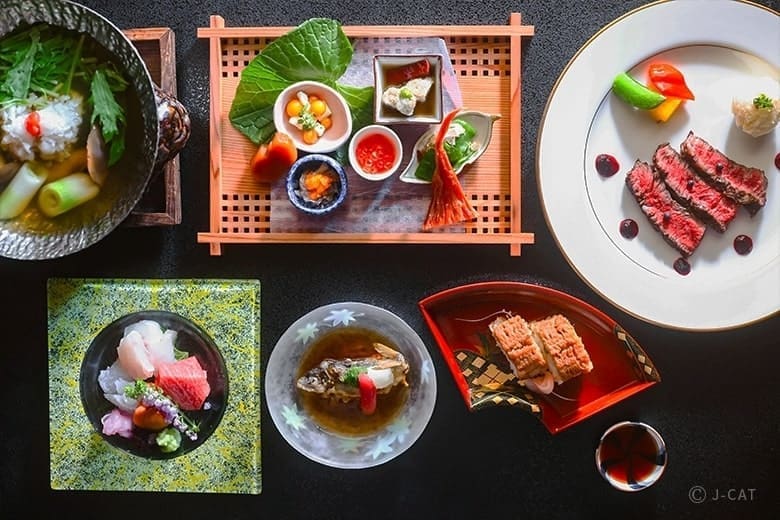
Traditional Performances and Games
Partway through the evening, Masane performed a traditional dance while Masaki accompanied her on the shamisen, a traditional three-stringed instrument. The guide told me these performances were often the highlight of the evening. I understood why right away. The precision of their movements, their grace acquired after years of dedication, the music, and the atmosphere all came together to create a moment I’ll never forget.
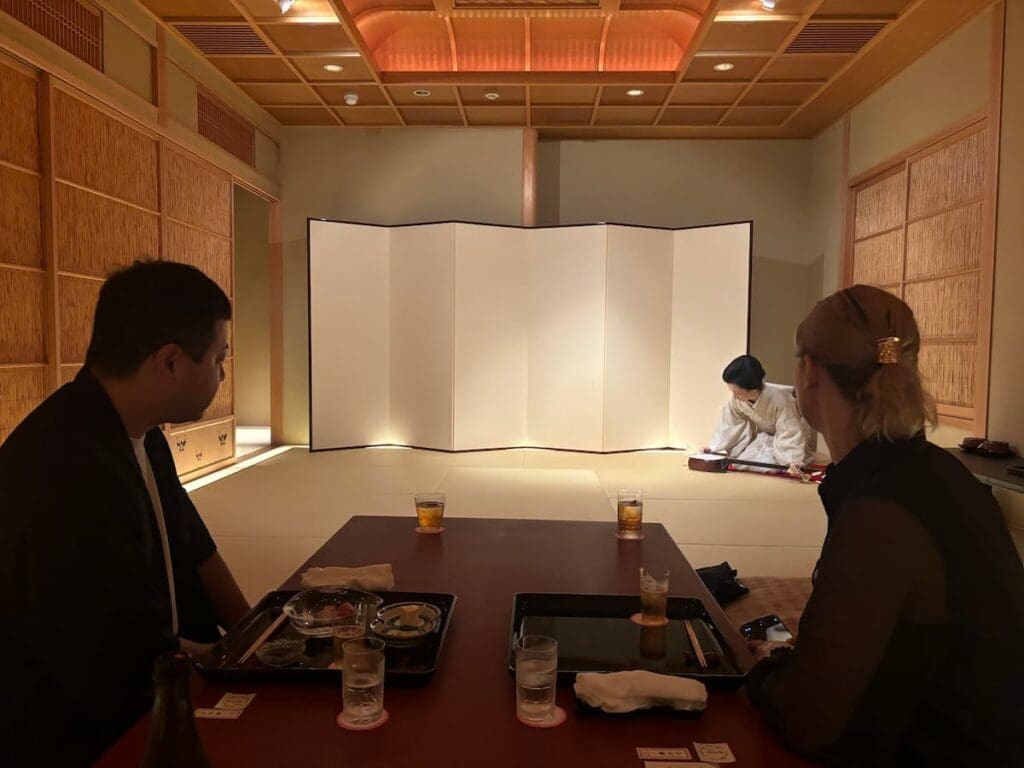
After the performances came ozashiki asobi, or traditional parlor games. We played Konpira Funefune, a rhythmic hand game, and Toratora, a fast-paced version of rock-paper-scissors. By this point, I noticed my initial nervousness had completely vanished. I was actually surprised at how fun these simple games were. Maybe it was due to the geiko and maiko being such good entertainers, or maybe because of the few drinks I had so far (drinks were unlimited and Masaki and Masane were refilling my cup as soon as I finished it), but it was surprisingly very easy for me to join the fun despite my introverted nature.
By the end of the games, I felt completely at ease, and the evening had flown by faster than I could have imagined.
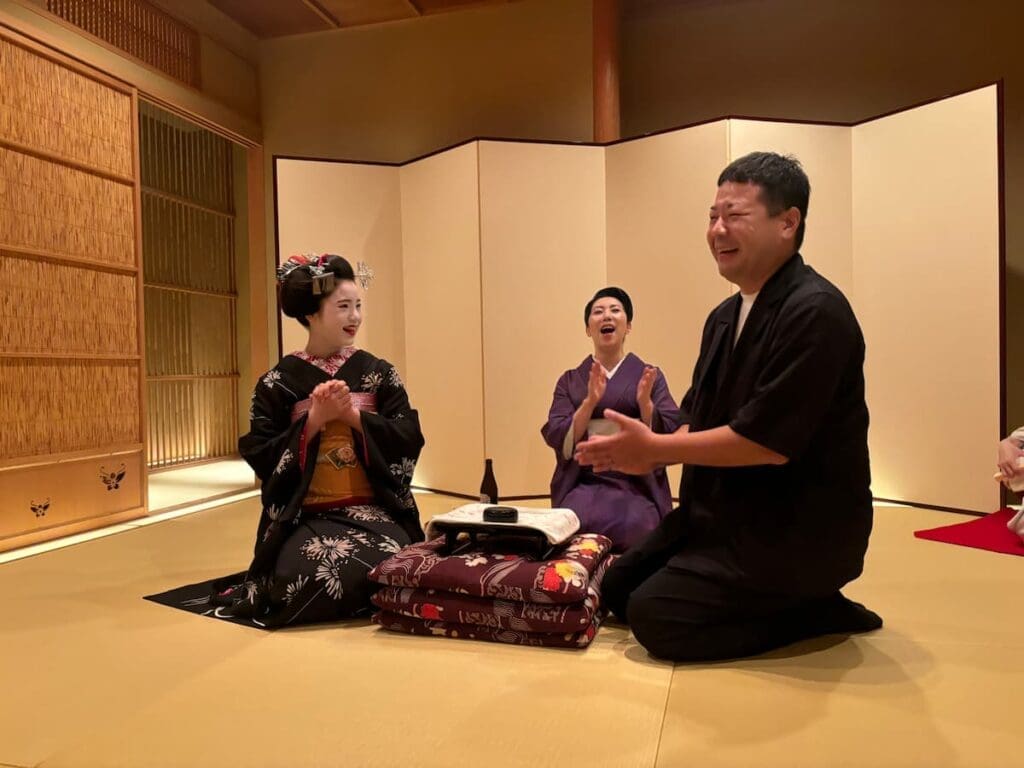
After a final chat, it was time to say goodbye to Masaki and Masane and leave the ochaya. As we stepped out, my friends and I looked at each other and said almost in unison: “That was amazing”.
Since we were heading in the same direction, we walked with Selina for a few streets, chatting about our impressions and asking her a few last questions. Then we parted ways and headed back to our hotel.
Why This Experience Is Special
Before attending, I’ll admit I was skeptical about the cost of this kind of experience. I’d always thought that a dinner with geiko and maiko might be overpriced for what it was.
But I was completely wrong.
What makes a geiko and maiko dinner so special is the personal connection you feel throughout the evening. Being able to speak directly with them, ask questions, and see their performances up close is something you can’t experience anywhere else.
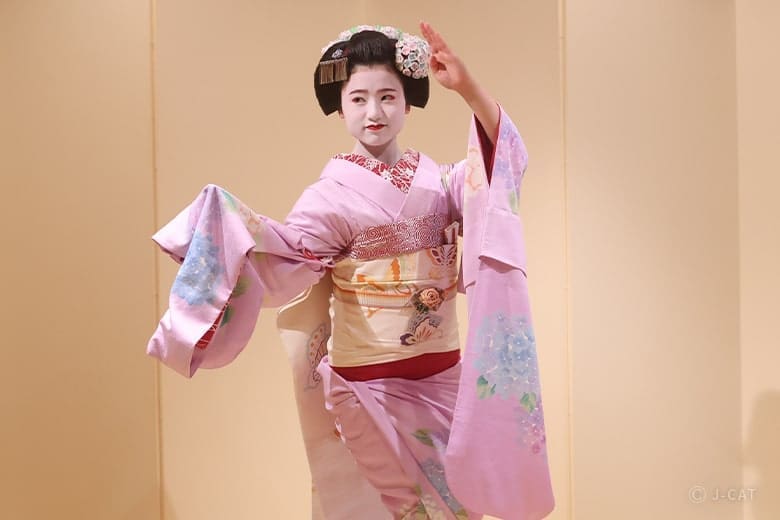
The ochaya itself added to the magic. You could feel this place was authentic, and the ozashiki was private and comfortable, perfect for enjoying the dinner and chatting with the geiko and maiko.
Something else that really stood out throughout the night is the hospitality. The geiko and maiko poured drinks for me, refilled my cup before I even noticed it was empty, the in-house chef accommodated our dietary preferences, and every moment of the evening felt smooth and seamless.
Is a Private Geisha Dinner Worth It?
Absolutely.
If you’re interested in the geiko and maiko culture or looking for a once-in-a-lifetime experience, I highly recommend this experience.
That said, it’s important to note that this evening is on the expensive side. It’s worth considering only if you have the budget or if it’s a lifelong dream of yours.
For other ways to see and meet geisha in Kyoto, read my full guide here. My top recommendation is this behind-the-scenes experience, where you can visit off-limits areas of an ochaya and even learn from the proprietress herself (on top of meeting a maiko, talking with her, and watching her performance). As you can imagine this experience is not cheap, but it is more affordable than a more classic full-course dinner experience as food won’t be served.
Opportunities like this are incredibly rare. With fewer geiko and maiko in Japan today, this is a unique chance to meet some of the most talented geiko and maiko of our time in the heart of Kyoto’s most famous geisha district.
If you’d like to book this geiko and maiko dinner, you can do so through Wabunka. They’ll arrange everything for you, including a private guide and securing access to some of Kyoto’s best geiko and maiko. But be prepared to have multiple dates available for flexibility as these bookings are notoriously difficult to secure.
If this is on your bucket list, don’t hesitate. It wasn’t even on mine, but now I’m adding it to my friends and family’s.


Comments are closed.